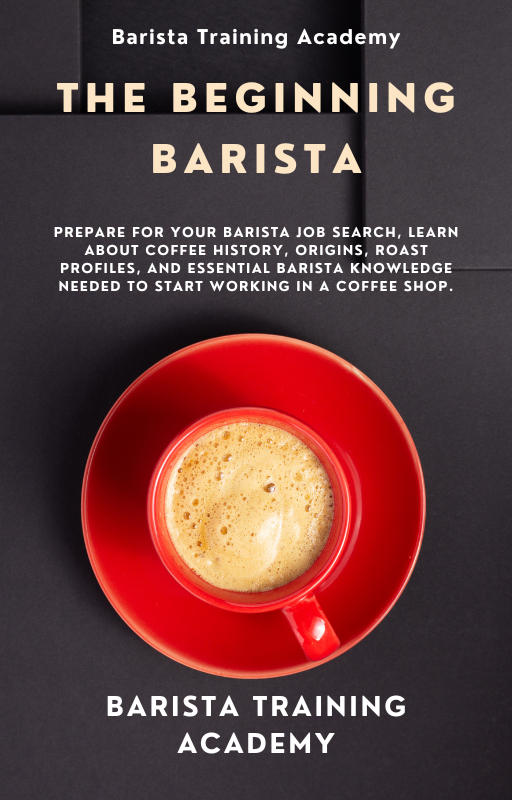Barista Terminology: Lingo To Brew Coffee Like a Pro
Baristas have their own language that might sound like magic spells or mantras. However, it’s not magic at all – just science and knowledge.
As a coffee shop customer, you might know many terms related to coffee recipes (latte, cappuccino, Americano) or the size of coffee (tall, grande, venti). But backstage is a totally different world where you, as a barista, must know the parts of an espresso machine, elements of your workstation, coffee tools, and coffee preparation terminology.
Here at Barista Training Academy, we have collected a decent vocabulary of the most common barista terms that might be very handy every time you hear a new word. Even if you haven’t got your barista gob yet, it’s a good idea to get acquainted with these coffee terms because you’ll need to memorize them anyway in your barista job.
This coffee glossary will also help you as a new barista.
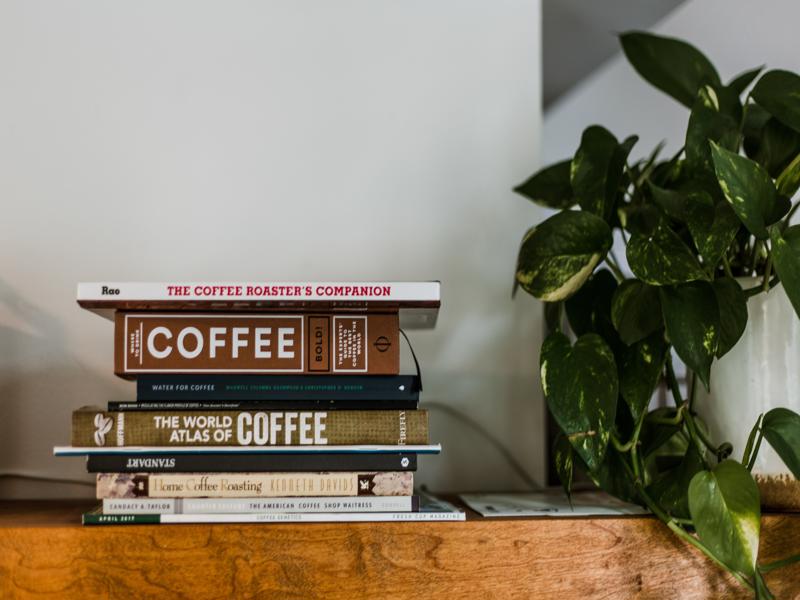
Barista Terminology:
Acidity – 1) a coffee quality that makes coffee bright, bubbly, pleasantly tart to taste; it distinguishes high-quality coffees from bland, tasteless coffees; the level of acidity is often used to describe coffees during coffee cuppings; 2) literally the level of acids in coffee (pH). In coffee, it’s about 5 pH.
Affogato – an espresso served with a scoop of ice cream.
Aeropress – a patented coffee brewing device that has consisted of a chamber for coffee, a filter cap where a paper filter is placed, a plunger. After the coffee is brewed, it’s being pushed through a chamber with the plunger resulting in a strong concentrated coffee drink.
Aeration – the first stage of milk steaming, also known as “Stretching,” when the air is introduced into the milk with a loud paper-tearing sound. During this stage, the milk increases 50% of its initial volume.
Arabica – a coffee tree species that makes about half of the coffee produced globally; has more acidity and less caffeine than Robusta; considered to be better quality, more flavorful, aromatic, and pleasant to drink; it’s more difficult to cultivate and more expensive.
Aroma – a sensation produced by freshly brewed coffee; coffee aroma includes more than 800 aromatic compounds.
Backflushing – the process of cleaning an espresso machine when you insert a blind portafilter and start hot water in cycles to remove any coffee leftovers from inside the group heads.
Balanced – a term that describes a harmonious combination of various coffee characteristics.
Basket – a filter basket for coffee that is inserted into a portafilter.
Bland – a description of coffee that lacks acidity, brightness, or any other characteristics that make it interesting.
Blend – a combination of several single-origin coffees.
Blind basket – a portafilter basket with no filter holes used for full backflushing.
Body – a mouthfeel sensation of physical coffee characteristics: thickness, richness, texture.
Boiler – the main part of an espresso machine used to heat the water for espresso extraction. Espresso machines can have one or two boilers.
Burrs – elements of a burr grinder that look like two disks with sharp cuts on them.
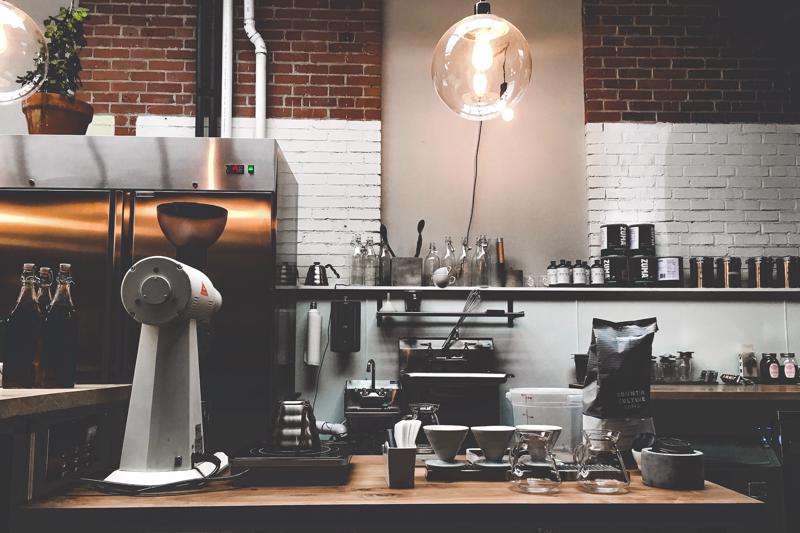
Barista Terminology Continued:
Caffeine – a chemical derived from certain plants that have a stimulating effect. Coffee trees produce caffeine as a natural pesticide against insects.
Cezve – a pot with a handle used to make Turkish coffee on hot sand.
Cherry – a coffee tree berry resembling a cherry when ripe; each coffee cherry has two seeds inside, collected manually by coffee farmers.
Crema – a thin layer of brown foam on the surface of a freshly brewed espresso shot made of carbon dioxide bubbles attached to coffee oils during the extraction process.
Cupping – a process of coffee tasting to evaluate coffee beans. The professionals use spoons to sip coffee and spit it into a cup.
Decaf – a coffee with reduced caffeine levels, which was extracted from green coffee beans with the help of special solvents.
Demitasse – a small 3 oz. Cup used to serve espresso.
Distribution – a process of smoothening the mound of coffee grounds after dosing it into a basket and before tamping.
Doppio – a portion of double espresso (50-60 ml (1.7 – 2 oz).
Doser – a part of a coffee grinder, a chamber that collects coffee after grinding.
Dosing – a process of placing coffee grounds into a basket. To brew a double espresso, you need to dose 20 g (0.7 oz) of coffee grounds.
Drip coffee – a coffee brewing method where coffee grounds come in contact with water not under presser but by water slowly dripping through coffee grounds and paper filter into a cup.

Barista Terminology Continued:
Emulsifying – the second stage of milk steaming, also known as “Texturing,” when the milk starts spinning and gets hotter.
Espresso – 1) a coffee brewing method with an espresso machine; 2) a coffee drink extracted under pressure with an espresso machine.
Etching – a latte art technique of drawing patterns with the help of a sharp-pointed tool.
Chai – a common tea beverage made from black tea, milk, and spices.
Dialing-in – a process of adjusting the size of the coffee grind to reach the optimal espresso shot quality.
Degassing – a natural process when roasted coffee beans release carbon dioxide.
Dried coffee – a coffee processing method when ripe coffee cherries are sundried right after picking.
Extraction – a process of removing coffee solubles, oils, and flavors with the help of hot water and in the course of any brewing method.
Earthy is a taste characteristic that resembles fresh earth; it can either be a positive characteristic or a defect.
Filtered coffee – any coffee brewing method uses a paper filter, such as “Drip coffee.”
Flavor – the description of coffee aroma and taste; coffee flavors can be chocolaty, fruity, nutty, earthy, etc.
French press – a coffee brewing pot with a plunger that separated coffee grounds by pressing them to the bottom; patented in Italy in 1929.
Fair-trade coffee – coffee purchased from farmers according to fair trade standards: transparency, fair prices, sustainability.
Frothing – a milk-steaming process that consists of two stages: aerating and emulsifying.
Barista Terminology:
Gasket – an espresso machine element; a rubber band placed in a groove in the group head under the screen.
Grinding – a process of breaking roasted beans into tiny particles with a grinder's help before brewing.
Grinder – a coffee shop equipment used to grind coffee; can have a doser or be doserless; can have blades or burrs.
Grouphead – an element of an espresso machine exterior that delivers water from inside the machine into a portafilter basket.
Hopper – an element of a grinder that holds coffee beans before grinding. It’s recommended not to store beans in a hopper but constantly replenish the contents.
Jug – a tiny spouted pitcher used to extract espresso into it and then pour into a latte.

Barista Terminology:
Knock box – a dedicated bin to dispose of used coffee grounds; usually has a bar across to strike a portafilter on it.
Kopi Luwak – one of the most expensive coffees in the world due to its unique production process; the cherries of this Indonesian coffee are being digested and then discharged by a local civet.
Lungo – a “long” shot in Italian; an espresso drink with a longer extraction time than a regular espresso resulting in a weaker and less concentrated shot.
Matcha – a powder from green tea leaves sometimes used to make tees, lattes, or desserts.
Mocha – 1) An espresso drink with chocolate; 2) the oldest coffee from Yemen.
Microfoam – steamed velvety milk comprised of tiniest bubbles; used for latte art.
Naked portafilter – a bottomless portafilter with no spouts used to evaluate espresso consistency, crema, and other issues.
Barista Training Academy
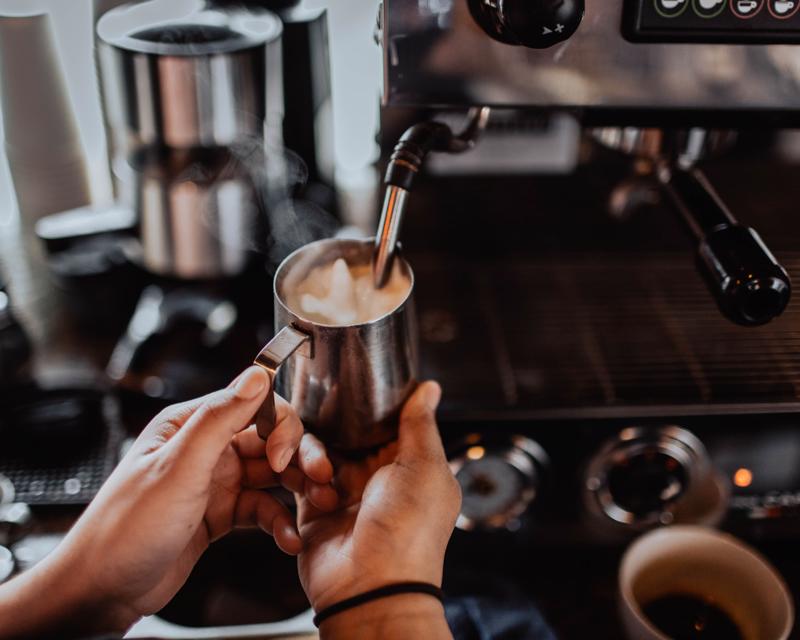
Terminology Continued
Organic coffee – coffee that holds a certificate proving it was grown without using chemical additives, pesticides, or herbicides.
Pitcher – a stainless steel vessel with a spit and a handle used to steam and pour milk.
Polishing – a process of swirling the steamed milk to get a uniformed velvety, silky milk texture.
Portafilter is a removable part of an espresso machine where the coffee grounds are measured and dosed; it consists of a handle, a filter holder, a filter basket, and spouts.
Pour-over – a coffee brewing method that involves pouring hot water manually over coffee grounds. Basic manual brewers: Chemex, V60, Kalita Wave, Kone, etc. The ideal coffee to water ratio is 60 g of coffee per 1 liter of water. Also, see “Drip coffee.”
To Pull – a verb used to describe the process of extracting a shot of espresso. It goes back to the times when all espresso machines had levers that needed to be pulled.
Puck – compressed coffee grounds in a filter basket.
Pump – an inside element of an espresso machine that creates 9 bar pressure to extract espresso.
Ristretto is a “short” shot in Italian; an espresso drink takes less extraction time than a regular espresso, resulting in a stronger and more biter shot.
Robusta – a coffee tree species that have less acidity and more caffeine than Arabica; considered to be lower in quality and is used to produce instant coffee or coffee blends; it’s easier to cultivate, and it’s less expensive.
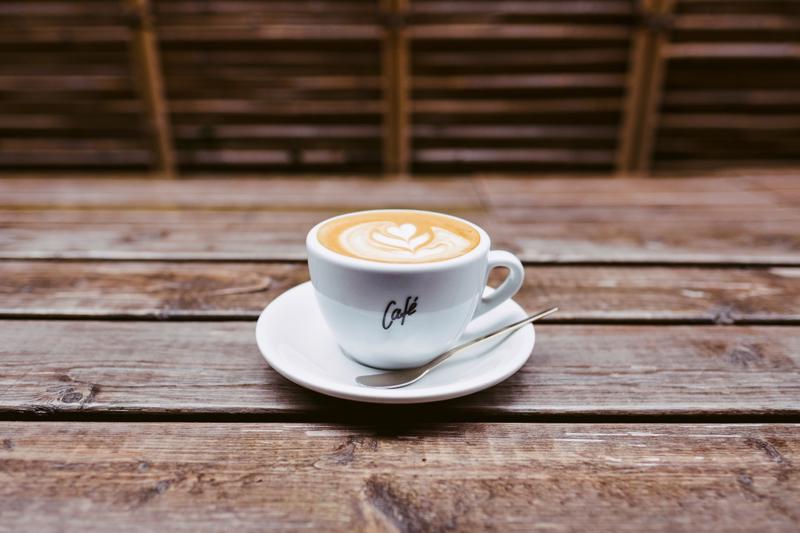
Barista Terminology:
Single-origin – coffee sourced from one particular region comes unblended.
Shot – one serving of espresso (one-shot is 25-30 ml (0.84 – 1 oz).
According to the Specialty Coffee Association of America Standards, specialty – exceptionally high-quality single-origin green coffee beans meet with a score of 80 or more.
Steam wand – an exterior element of an espresso machine that looks like a metal arm. The steam comes out through the holes on the steam wand tip and froths the milk.
Tamper – a basic barista tool used to compress coffee evenly in a coffee basket after leveling; consists of a handle and a flat round metal base.
Tamping mat – a silicon or rubber cushion attached to a table's edge, used to place a portafilter for coffee tamping.
To Tamp – an action of compressing coffee grounds in a portafilter basket with a tamper's help to ensure even distribution of grounds for uniform water flow.
Varietal – a variety of coffee plants, some are typical for certain regions; others grow worldwide; the best known Arabica varietals are Typica, Bourbon; the other varietals are cross-bred from Typica and Bourbon: Caturra, Catimor, Gesha, Maragogype, Pacamara.
Washed coffee – coffee beans that underwent wet coffee processing method; the ripe coffee cherry is de-pulped and soaked or fermented in its own juice, then washed and dried.
Yield – the percentage of the ground coffee dissolved in the water; all caffeine, coffee solubles, oils, and flavor extracted into a cup.
Barista Training Academy: Your Barista Training Resource
At Barista Training Academy, we aim to help you develop your coffee knowledge, barista skills, and prepare you for your job interview. For more information, visit our barista training blog for more in-depth barista articles.

Brought to you by Barista Training Academy, “The Beginning Barista,” Your Ultimate Prep Guide to Getting Your First Job as a Barista” is an ultimate resource that is available online. It is affordable for anybody who is looking to start a career in the coffee industry. For more information, visit our blog.
